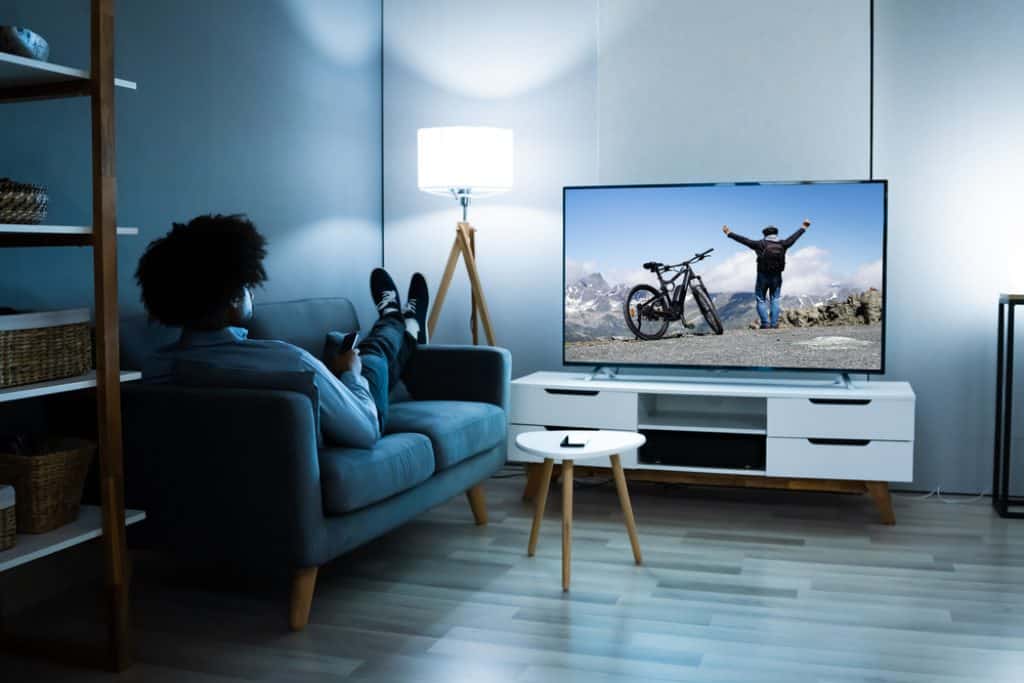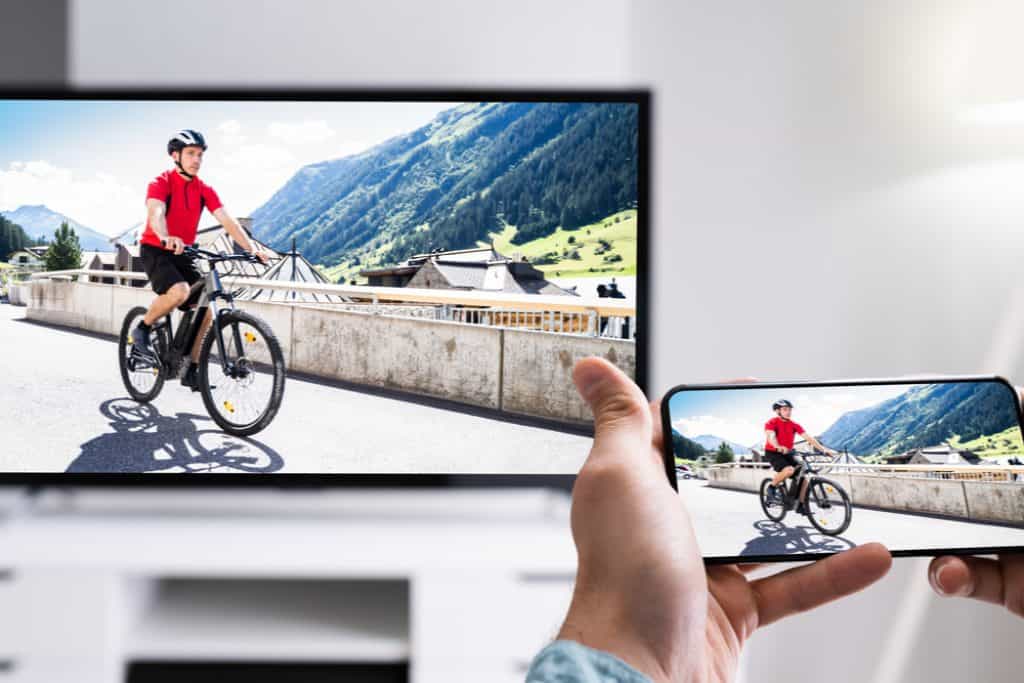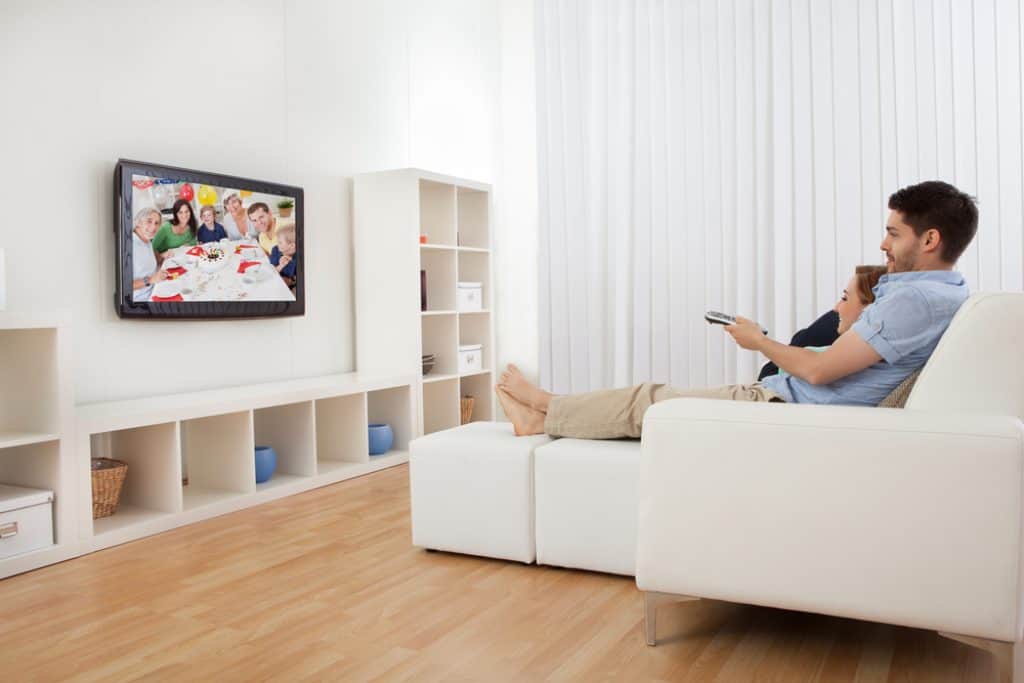In this review, I will be talking about the VIZIO D-Series 32’s design. Additionally, I will look into its features, such as display, ports and connectivity, sound, and smart features. Additionally, I will provide a rating based on my personal viewpoint at the end of each section of this review. Furthermore, I will make comparisons between the TV and some of its biggest competitors. Finally, you should have sufficient information after reading this review to decide whether the VIZIO D-Series 32 is the right TV for you.
My Initial Thoughts
The VIZIO D-Series 32 is a decent Full-HD LED Smart TV with excellent viewing angles. It boasts a minimal input lag for decent motion handling, as well as for gaming. However, due to its non-uniform display screen and low brightness, its display quality is poor. Additionally, its audio quality isn’t really impressive. On the plus side, the VIZIO D-Series 32 is very affordable, just like most VIZIO television. It has a price tag of $174.99 in October 2021, when I published this article. However, will its low price be enough for buyers to overlook its flaws? There is only one way to find out – continue reading!
VIZIO D-Series 32 Design, Dimension & Weight Review
The design of the VIZIO D-Series 32 looks very similar to most VIZIO TVs. The entire body of the television is made up of plastic. However, when viewed from the side, the television looks a bit thick. As a result, the television will kind of stick out from the wall if you decide to get it wall-mounted. On the plus side, the bezel around the television’s display is pretty slim, and it looks quite simple. Moreover, the display bezel has a slightly textured finish on the sides, which gives the television a premium look. Something else that gives the television a premium look is the “Vizio” logo imprinted on the bottom display bezel. Moving on, the VIZIO D-Series 32 comes with two plastic legs, which are very close to its edges. Therefore, if you are planning on not wall-mounting the television, you will need a large table to place the TV. However, the plastic legs should support the television very well and makes it stable. Moving on to the television’s size and weight. The VIZIO D-Series 32 measures 730.8 x 291.1 x 430.8 mm and weighs 5297.9 g. With this size and weight, the VIZIO D-Series 32 is pretty much heavier than the Hisense 32H4F. Specifically, the Hisense 32H4F measures 728.9 x 73.6 x 431.8 mm and weighs a mere 3810.1 g. In conclusion, the VIZIO D-Series 32 is a decent-looking television. However, its thickness and weight are huge drawbacks if you wish to mount the television on the wall. Therefore, I will be rating the VIZIO D-Series 32 an eight out of ten.
VIZIO D-Series 32 Display Features Review
The VIZIO D-Series 32 features a 31.50-inch LED display screen. Moreover, this display comes with a resolution of FHD (1920 x 1080), and an aspect ratio of 16:9. I know you must be thinking about what an aspect ratio means; well, let me shed more light on that. The relationship between an image or screen’s width and height is known as an aspect ratio. Additionally, an aspect ratio consists of two numbers separated by a colon. The first number before the colon indicates the screen’s width, while the second number after the colon means its height. However, the VIZIO D-Series 32’s display has a very disappointing contrast ratio. It has a mere contrast ratio of 800:1. The contrast ratio refers to the ratio between the maximum and minimum brightness of a display screen. To put it another way, the ratio of a display’s brightest white to its darkest black. Moreover, LED televisions, such as the VIZIO D-Series 32, typically offer contrast ratios ranging from 700:1 to 7500:1. Therefore, VIZIO’s D-Series 32, with an 800:1 contrast ratio, is one of those LED TVs with the lowest contrast ratio. As a result, black content on the television’s display will look more like gray. Besides that, the picture quality will be subpar, and watching the TV in well-lit areas wouldn’t be a good idea. This is because a display’s contrast ratio also affects its brightness. Therefore, the VIZIO D-Series 32’s display also has poor brightness, recording a maximum brightness of 195 cd/m². Moreover, I don’t really blame the VIZIO D-Series 32 for having a disappointing display contrast ratio and brightness. This is because VIZIO didn’t design the television to support HDR (High dynamic range). HDR is a technique to improve the dynamic range of content displayed on a screen. The contrast between a picture’s darkest blacks and brightest whites is also known as dynamic range. As a result, televisions that support HDR are generally bright. Therefore, the lack of HDR compatibility is the reason for the VIZIO D-Series 32 display’s poor contrast ratio and brightness. Additionally, without supporting HDR, the VIZIO D-Series 32’s display can’t produce as many colors as an HDR-compatible television. Also, the VIZIO D-Series 32’s display will deliver content/images that are less vibrant. Now let’s talk of something good about the VIZIO D-Series 32’s display. The display is pretty decent at handling reflections. This is due to the display’s semi-gloss coating, which retracts reflections and reduces their intensity throughout the display. However, the VIZIO D-Series 32’s display only handles reflection perfectly in average-lit areas. Thus, in a well-lit room or area, handling reflection may be difficult. Moving on, The VIZIO D-Series 32’s display does not have a local dimming feature. Local dimming is a technique for improving a television’s black levels. Although there is a ‘Backlight Control’ option, it isn’t a local dimming feature. It’s more like frame dimming, which dims the screen based on what appears on the screen. Furthermore, the VIZIO D-Series 32’s display has a 120 Hz refresh rate, which makes it very suitable for gaming. A display’s refresh rate is the number of times per second that the display can draw a new image. Moreover, it is not only its refresh rate that makes the VIZIO D-Series 32’s display suitable for gaming. The VIZIO D-Series 32’s display also has a decently low input lag of 24.9 milliseconds. Input lag is the amount of time or how fast it takes a display to register a signaled input. The lower the input lag the fast the display responds to an input. In conclusion, the display is the most important factor of a television. However, the VIZIO D-Series 32 failed to impress in that aspect with its below-average 31.50-inch display. Therefore, I will rate the VIZIO D-Series 32 a seven out of ten in this display review section.
VIZIO D-Series 32 Sound Features Review
The VIZIO D-Series 32 comes with two 10-watt speakers. From the bottom of the television, these speakers deliver sound directly to the floor. Unfortunately, the speakers do not sound great. Therefore, you won’t get a lot of bass or crystal-clear dialogue from the speakers, but they’ll suffice for casual viewing. However, the VIZIO D-Series 32 supports two audio formats. The audio formats include DTS Virtual:X and DTS-HD high-definition audio. However, at higher volumes, the VIZIO D-Series 32’s speakers, like most low-cost television speakers, have a high THD score. Total Harmonic Distortion (THD) is a measure of quantifying the amount of distortion produced by a piece of audio equipment. The measurement result is commonly delivered as a percentage; the larger the percentage, the worse the distortion. Let me clarify what distortion implies if you don’t already know. Distortion is defined as any change to an original signal created by a system. Additionally, distortion is a problem in sound production because it reduces the accuracy of the sound produced by a speaker. Sound distortion, in a nutshell, is a huge problem for a speaker. As a result, a high Total Harmonic Distortion percentage score for a speaker is a huge flaw. However, if the THD percentage of a speaker is less than 1%, listeners will not notice any distortion. Unfortunately, the VIZIO D-Series 32’s speakers have a high TDH score of 1.219 percent, as I said earlier. As a result, when listening to loud music or an action movie scene, sound distortion will definitely be a problem. So, you’ll probably want to purchase a soundbar for this television if you really want to enjoy it. In conclusion, the VIZIO D-Series 32’s speakers are somewhat poor. Besides that, distortion will also be a big issue for most users. Based on all the information and analysis in this sound review section, I believe the VIZIO D-Series 32 doesn’t deserve a rating of more than a seven.
VIZIO D-Series 32 Ports & Connectivity Features Review
As a low-cost entry-level television, the VIZIO D-Series 32 isn’t exactly fitted with a ton of ports. However, the ones available should be enough for most users. As expected, most of the ports are housed at the back of the television. So, on the back, you will find two HDMI ports, one of which supports ARC (audio return channel). Considering the television’s price, having only two HDMI ports isn’t a deal-breaker, but it is something to take into account. That is if you know you will be plugging in more than two HDMI devices to the television. Therefore, you’ll need to either purchase another television with more HDMI ports or get an HDMI splitter. Well, HDMI ports aren’t the only ports that the VIZIO D-Series 32 has. It also features a USB port, an Ethernet port, optical audio out, and a 3.5mm aux port. Additionally, it has composite-in video ports for RCA connectors. RCA connectors are red, white, and yellow connectors for audio and video signals. For wireless connectivity, the VIZIO D-Series 32 has an in-built 802.11n WIFI. However, it lacks Bluetooth. On the plus side, the VIZIO D-Series 32 comes with remote control, which is pretty basic. On this remote, there are shortcut buttons for Prime Video, Netflix, and others, as well as VIZIO’s WatchFree service. Additionally, the remote control has a full-size channel and volume rockers, navigation buttons, and a full number pad. However, the remote doesn’t look sleek or attractive, but it more than makes up for it in terms of functionality. In conclusion, the VIZIO D-Series 32 is pretty rich in terms of port selection. However, it features only two HDMI ports which is understandable considering the television’s price. Therefore, I will rate the VIZIO D-Series 32 an eight out of ten in the port and connectivity review section.
VIZIO D-Series 32 Smart Features Review
As expected from a VIZIO smart TV, the VIZIO D-Series 32 features VIZIO’s own SmartCast operating system. The interface of this operating system consists of a settings menu, a quick app menu, and a complete app menu. This makes the interface straightforward and easy to understand. However, its straightforward interface is hindered by stutter and lag. The SmartCast interface takes a quarter second to respond to button inputs, and all the animations look jerky. However, the interface is still extremely functional and does not crash, but navigation will be a fairly difficult task. Moving on, the SmartCast operating system includes pre-installed versions of major streaming services/apps, such as Netflix and YouTube. However, there aren’t many more apps/streaming services available in the operating system’s app store; there are only 82 in total. That’s where the television’s in-built Chromecast comes in. Chromecast is a streaming gadget that allows users to stream Netflix, YouTube, Google Play, or Spotify content to their TV. The streaming content is said to be “cast” from a user’s phone or tablet to the television. Furthermore, a Chromecast has a lot of streaming services and apps installed. Therefore, since Chromecast is in-built into the television, users will be able to enjoy all of Chromecast’s features/streaming services. However, users will have to “cast” their preferred streaming content from their phones or smart devices to the television. In conclusion, the television’s SmartCast OS isn’t really outstanding, but it is very handy. Besides that, the television comes with an in-built Chromecast. Considering all these, I will rate the VIZIO D-Series 32 an eight in this Smart feature review section.
My Final Thoughts
The VIZIO D-Series 32 is budget-friendly television with average performance. Furthermore, the display of this television is below average, it isn’t HDR-compatible and has a low contrast ratio. Additionally, the display brightness is nothing to write home about – it is very poor. However, the television offers minimal input lag and a high refresh rate, making it ideal for gaming. In addition to that, the television comes with a decent number of ports. The television’s audio quality, on the other hand, is lacking due to poor and distorting speakers. Therefore, I don’t really think the television’s low price justifies these flaws. However, if you are on a tight budget and you don’t mind managing the television with these flaws, the VIZIO D-Series 32 is worth considering. I believe the information on this VIZIO D-Series 32 review is helpful. If that’s the case, it’s our pleasure that you share your experience with our community platform at Itechguides Community Forum. Also, you can ask questions or make comments regarding this guide’s topic at Itechguides Community Forum. Our forum staff and other community members will be delighted to provide a response to your questions or comments. For more Television reviews, visit our Television review page. You may also find our Television Specs page very helpful.
References and Further Reading











